Acrylic Pointillism, Oil & Coldwax, Mixed Media Original & Custom Fine Art for Your Meditation, Office or Living Spaces - Shop Online or Email for More Information
T (760) 880-8725
Email: studio@craigallenlawver.art
Craig Allen Lawver
16-566 Keaau-Pahoa Rd #188-205 Keaau, Hawaii 96749
JOURNAL : Essay
Oil & Coldwax Painting
Original Works
Medium, tools & ideas
Abstract painting and coldwax, oils. Within this sphere of creativity, the theoretical aligns with the abstract, the abstract abuts the representational. There is freedom to move towards definitive shape or indistinct form. Depicting a visually observed subject, is not fact or rule. I find freedom to suggest through complex, or subtle, symbol and cypher, concepts leading to ever greater ideas. Decoding who, what and where we are using something other than word or language. Visual images can potentially draw us deeper toward our past and our deeper interiors. These realms are hyper-populated with images. Abstract painting, coldwax and oils are tools to explore my interest in these subjects.
Visual art has the power to make us think, feel and grow. Oil paint has a certain feel and texture. A richness of colors, an intoxicating smell. Coldwax medium and its buttery-wax-like creaminess adds an expanded range of texture and versatility to oils. Coupling materials and ideas, harmony can unfold in the fertile grounds of studio practice. I love this space to think deeply about life.
I love creating thick, opaque layers, and placing them in juxtaposition to those that are translucent and shear. Coldwax medium is the perfect vehicle to achieve this aim. The capacity to imprint into these wax surfaces can yield the unexpected. I find, other materials play well with the medium. Moreover, a responsiveness to a range of diverse tools encourages and challenges my thinking. New ones emerge, old ones are transformed. Some examples, I use brayers, brushes, squeegees, palette knives, trowels, skewers, and carving tools.
The medium was been chosen almost as accident. I stumbled upon it on Instagram, were the use of the material resulted in paintings that excited me. Admittedly, I had been searching for something that I could work on in tandem with my acrylic pointillism. Several avenues are always being explored. This one appeared. I feel, that exploring artmaking outside any comfort zone is a necessary component of growth. And coldwax presented the opportunity to add oils back into a palette mostly grown acrylic. More fundamental perhaps, was the fact that after years of working in an acrylic pointillist technique, the prospect of returning to the use of oils was irresistible.
I have always held great admiration for those artists working with the abstract in painting. I have explored it in pointillism. However, as enjoyable as it can be, pointillism is primarily a tight and controlled technique for me. Even still in abstraction. But, I like being able to loosen up. The use of coldwax and oil techniques encourages me to work more from the shoulder and less from the wrist.
I think abstract painting and coldwax can encourage particular ways of thinking and perceiving. Many materials can. Exploration or discovery of bold or nuanced relationships can be allowed to take precedence over subjective representation. I typically steer clear of the term ‘intuitive’ painting because it can sound so ethereal or wishy-washy. In any case, the term does touch on the process. I work more from feeling and less with the planned is all it really says.
My goal is to work freely. Abstraction is the key direction I am taking in the use of this painting medium. As such, I do not typically start with any fully formed subjects in mind. There are seeds, but I am looking for the surprise outcome. Unintended conclusions are being allowed room to breathe. Gradually, I build up a rich complex surface of oils and wax, allowing little bits of history to reveal themselves. Very much like life in the modern.
Bits of underlying color emerge in areas. Dominated by a contrasting color or form, they add to the overall complexity of the surface. There are many layers of coldwax, and oil, dry pigments, pastels, charcoal and other materials applied over the course of days, weeks or months. Overall, think painting, scraping away, painting, scraping away. I do this repeatedly, until a finished work emerges.
There is no specific end in mind until the painting is finished. These works are not just paintings. It is art and life in flow, without prophesy or plan, without a defined direction.
I compare and contrast these works with my acrylic pointillism. Use them, like a psychological mirror or a potential learning tool. As such, a group of six paintings is usually started. As they develop some paintings will be grow before the others. Subsequently, some sit for an extended time before arriving at a definitive outcome or finished painting. The end is not known, as it is when I paint something like a flower.
For this process to work, as intended, I must also be working on an acrylic pointillist painting at the same time as this group of coldwax pieces. In this manner, I can observe clearly, how switching between the two very-different forms of expression, informs and simultaneously influences the work I’m doing in both disciplines. How it challenges my mind.
I am exploring concept as much as subject. Importantly, I am exploring process, methodology and thinking. There is a pushing back against the boundaries of my ability to arrive in a restful mind-state with the unknown. Above all, I am looking at the internal tension that exists for me in this painting process. I am interested in the difficulty I find in just allowing the process to unfold without a detailed plan. In how I handle the controlling mind.
These works are a synthesis of my meditation practice, studies, and the practice of making art. In short, I am engaged in each instance with the challenge of remaining fully aware of the present moment. Painting illuminates my successes and failures. Making art challenges how I perceive the road I am traveling, and what lies in front of me.
Colors, how they relate and interact are explored across the bodies of my work. I am interested in how transparent colors lay atop and alter one another. There is an alternating between the opaque and translucent. This quality of oils has historically been important. it is one I want to explore here.
The use of these same types of layers – opaque-transparent-translucent – are effective in the painting of walls. Those are surfaces on which I explore this writ large. I live with complex color surfaces in my personal space. Few walls in our home are not glazed and multi-layered. Abstract painting and coldwax painting allow me to bring it down a size.
Colors, what they are - how we perceive them - are typically more complex than what we initially believe. For comparison, think about the landscape. It is always much more complex than any single form, vista, word or idea. In fact, landscapes are heavily imbued with significance. Usually imparted through cultural conditioning. Their depth of meaning in art history is laden. In a naturalist sense, they are composed of many forms - flowers, trees, rocks, fish, grains of sand. In the same manner, landscape is a myriad of colors, textures, forms, hues and concepts. It is a vast land.
In unity and in division, these numerous components all have unique underlying structures. Composed of molecules and atoms or neutrons they become increasing complex the closer we look. Consider all in that light. I approach these works with that same awareness. And I am cognizant of the ways these complexities can be explored. In coldwax I am investigating how color, defined shapes or lines, contrast with underlying layers and elements. This is being done in the realm of the conceptual, thinking mind.
I begin my paintings by applying multiple layers of gesso on cradled wood panels. On some, I trowel on a decorative plaster for underlying texture. Acrylic-based Plasters provide a great base on which to build the layers of wax-mixture and oil paint.
I use R&F oil stick when I want to mark up the surface. From here, I mix what is roughly a 40-50/50 ratio of cold wax medium to oil paint and apply this using a squeegee. I might apply a single layer of color to the surface, let that dry and return later with additional layers. Or, I will apply a particular color and keep adding layers while fully wet. Colors may blend.
Crumbled up tissue paper, brayered into a semi-wet surface can yield interesting results. After pulling it up, there is textural imprint and pattern. Each piece differs considerably. I may also push into the wax with corrugated cardboard. Continued throughout, making these kinds of marks in layers across the surface, using tools, is my primary method of working.
Layering with wax, I have scraped soft pastel onto the surface or sprinkled it with a dry pigment. I continue building, covering up and revealing through subtractive technique, with palette knives. Rubber stamps can also be pressed into the surface for pattern.
Importantly, all this is done knowing, that the final painting is seldom determined by the earliest layers. In fact, those might disappear entirely. Actions become more deliberate as completion nears and there are areas I want to preserve. In the late stages I may apply with brush, an oil/galkyd/wax mixture. Lastly, there is a constant back and forth - putting paint on, taking it off, putting paint on - interspersed with wax and oils, marks using R&F pigment sticks.

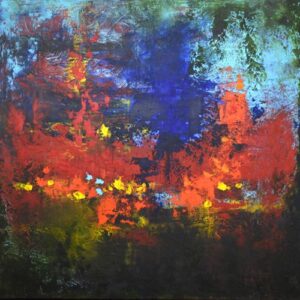
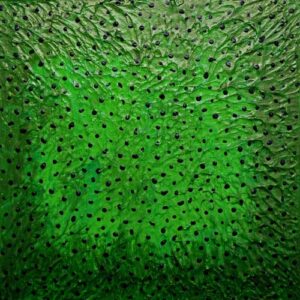
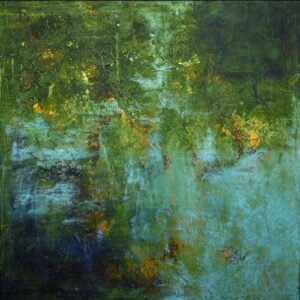
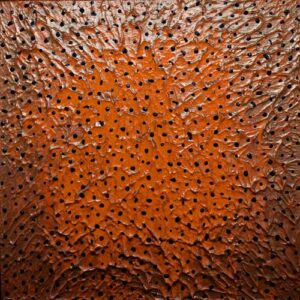
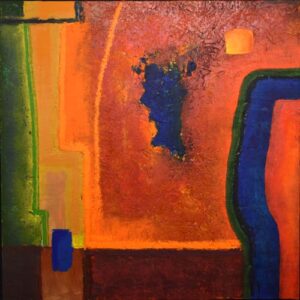

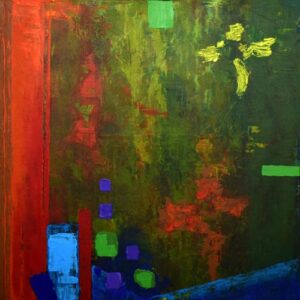

Facebook: Craig Allen Lawver Art